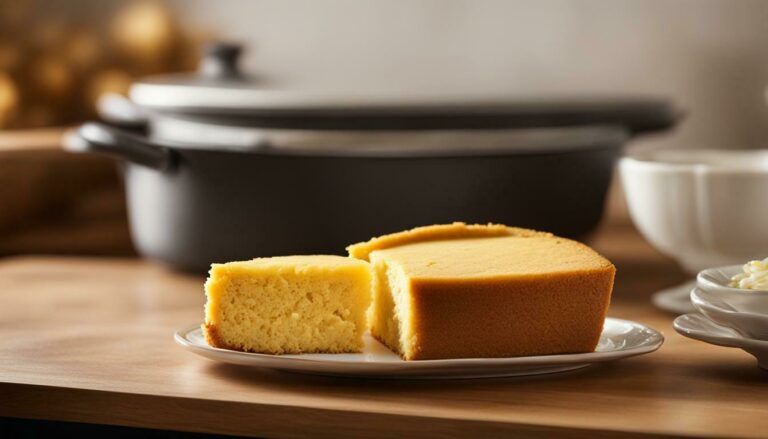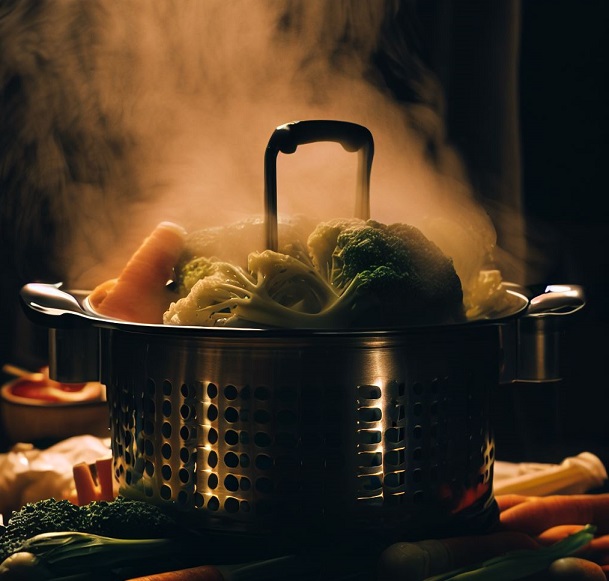Queso is a deliciously creamy dip that can easily ruin your meal if it’s not reheated properly. Nobody likes runny or separated queso, and it can be frustrating to try to get it right. Fortunately, you can avoid these issues and enjoy perfectly reheated queso every time!

Key Takeaways:
- Reheating queso can be tricky, but it’s possible to maintain its creamy texture.
- You can prevent separation and runniness by understanding why queso can separate and becoming familiar with the factors that contribute to this issue.
- With the right techniques, you can safely reheat queso in the microwave, on the stovetop, or in the oven without burning it or losing its creamy texture.
- If you’re reheating queso for a party, it’s important to choose the right serving vessel and keep it at the perfect temperature throughout the event.
Understanding Queso Separation and Runniness
When it comes to reheating queso, maintaining its creamy texture can be a challenge. One of the biggest issues is separation and runniness, which can leave you with a less than desirable result. But fear not, understanding the factors that contribute to this problem can help you prevent it from happening.
One common cause of separation is overheating the queso. When heated too quickly or too hot, the cheese can break down and release its oils, resulting in a thin and runny consistency.
Another factor is the type of cheese used in the queso. Some cheeses are more prone to separation than others, and using a combination of cheeses can also lead to separation if not properly balanced.
One way to prevent separation when reheating queso is to add a thickener, such as cornstarch or flour, which can help bind the cheese together and maintain its texture.
Next, let’s explore some specific tips for reheating queso on the microwave, stovetop, and oven to avoid separation and runniness.
Reheating Queso in the Microwave
If you’re short on time, microwaving is the quickest way to reheat queso. However, be careful not to overheat the cheese, as it can become runny and separate. Follow these steps to reheat queso in the microwave:
- Place your queso in a microwave-safe dish and cover it with a microwave-safe lid or plastic wrap. Leave one corner of the lid or wrap open to vent the steam.
- Set your microwave to 50% power and heat the cheese for 30 seconds.
- Remove the dish from the microwave and use a spoon or spatula to stir the queso, making sure to mix in any separated liquids.
- If the queso is not heated through, repeat steps 2 and 3 until it reaches the desired temperature.
- Once the queso is heated through, remove it from the microwave and serve immediately.
Remember to adjust the heating time and power level according to your microwave’s wattage and the amount of queso you’re reheating. And don’t forget to stir frequently to maintain the creamy texture.
Reheating Queso on the Stovetop
Reheating queso on the stovetop is an excellent option for maintaining the creamy texture of your leftover queso. However, it can be a delicate process, and if you’re not careful, your queso can separate or burn. Here are some tips on how to reheat queso on the stovetop perfectly every time.
Step 1: Low Heat is Key
Start by heating your stovetop to low heat. If you apply too much heat, your queso will likely burn or separate, ruining the texture and flavor. Using medium or high heat will also cause the cheese to melt too quickly, leading to a clumpy or gritty consistency.
Step 2: Stir Frequently
Stir your queso frequently while reheating it on the stovetop. This will not only prevent it from burning but also ensure the cheese is heating evenly. If you notice any separation, gently stir the queso until it combines again. 2kiski порно
Step 3: Add Some Liquid
If your queso is too thick and has already started to separate, adding a bit of liquid can help salvage it. One option is to add a splash of milk or heavy cream to the queso. The added liquid will help bring the cheese back together and help maintain its smooth and creamy texture.
Step 4: Adjust Temperature
If your queso is still not the desired texture, you can adjust the heat to increase or decrease the temperature slightly. This will help you find the right balance between heating the cheese and maintaining its texture.
Step 5: Keep It Covered
When reheating queso on the stovetop, keep it covered with a lid or aluminum foil. This will help trap in moisture and prevent the cheese from drying out or forming a skin. It will also ensure that the cheese stays warm and ready to serve.
By following these tips, you can reheat queso on the stovetop without worrying about it getting too runny or separating. Just remember to keep the heat low, stir frequently, add some liquid if needed, adjust the temperature, and keep it covered.
Reheating Queso in the Oven
Reheating queso in the oven can be a great way to achieve perfectly melted cheese. However, it’s important to avoid burning the cheese and having it separate.
Preheat your oven to 350°F. Place the queso in a oven-safe dish and cover it with a lid or aluminum foil. Heating it in a covered dish will help to retain moisture and prevent the cheese from drying out.
Place the dish in the oven and set the timer for 10-15 minutes. Keep a close eye on the queso to ensure that it doesn’t start to burn or separate.
If you find that the queso is not heated through after 15 minutes, check on it every 2-3 minutes until it reaches the desired temperature. Be careful not to overheat it, as this can cause the cheese to separate and become oily.
Once the queso is heated through, remove it from the oven and give it a good stir. This will help to redistribute the heat and ensure that it’s heated evenly.
Now your queso is ready to be served and enjoyed!
Thicken Queso to Prevent Separation
If you’re looking to prevent your queso from separating when reheating, thickening it up beforehand is the way to go. Here are some tips:
- Add cream cheese or sour cream to your queso for extra thickness. These ingredients also help stabilize the cheese, preventing it from separating.
- If you’re in a pinch and don’t have cream cheese or sour cream, you can use cornstarch or flour to thicken your queso. Make a slurry by mixing the cornstarch or flour with a bit of cold water until it forms a paste. Add the slurry to your queso and stir until it thickens.
- If you’re reheating your queso on the stovetop, adding a bit of milk or cream can help prevent separation while also keeping the cheese creamy.
By using these thickening techniques, you’ll be able to achieve a more stable queso that won’t separate or become runny when reheated.
Reheating Queso for a Party
Hosting a party? It’s important to serve your queso warm and ready to eat. Here are some tips to make sure your queso stays delicious and creamy throughout your event:
- Portion Control: Serve queso in smaller bowls to prevent it from getting cold or overcooked.
- Keep it Warm: Use a fondue pot, slow-cooker or chafing dish to keep your queso warm and at the right consistency.
- Add Liquid: Add milk or cream to your queso to help maintain its creamy texture.
- Reheat in Small Batches: Reheat small portions of queso as needed to avoid overcooking or drying it out.
- Serve with the Right Dippers: Choose sturdy dippers like tortilla chips, bread or vegetables that can withstand the heat and weight of the queso.
With these tips, your queso will be the star of your party and stay delicious and creamy for your guests to enjoy!
You may also like to read theses reheting guides:
Your Guide on How to Reheat Cornbread Perfectly Every Time
Mastering Pork Chops Wine Pairing: Your Essential Guide
Your Guide on How to Reheat Calzone for Best Flavor
Unveiling the Culinary Magic: How Big is a 2 Quart Pot?
Simple Steps on How to Reheat Injera for a Fresh Taste
Ultimate Guide: How to Reheat Sesame Chicken Perfectly
Conclusion
Congratulations! You now have all the tools you need to reheat queso perfectly every time. Whether you prefer using the microwave, stovetop, or oven, we’ve covered all the bases to help you achieve that creamy texture you love.
Remember, separating and runny queso can be avoided by following our tips to adjust the temperature and time, stirring frequently, and adding ingredients to thicken the mixture. And if you’re reheating queso for a party, keep in mind the importance of portion sizes and maintaining the perfect temperature throughout the event.
So go ahead and enjoy that delicious queso dip without any worries. With our simple guide, you’re sure to impress your guests and keep everyone coming back for more!





